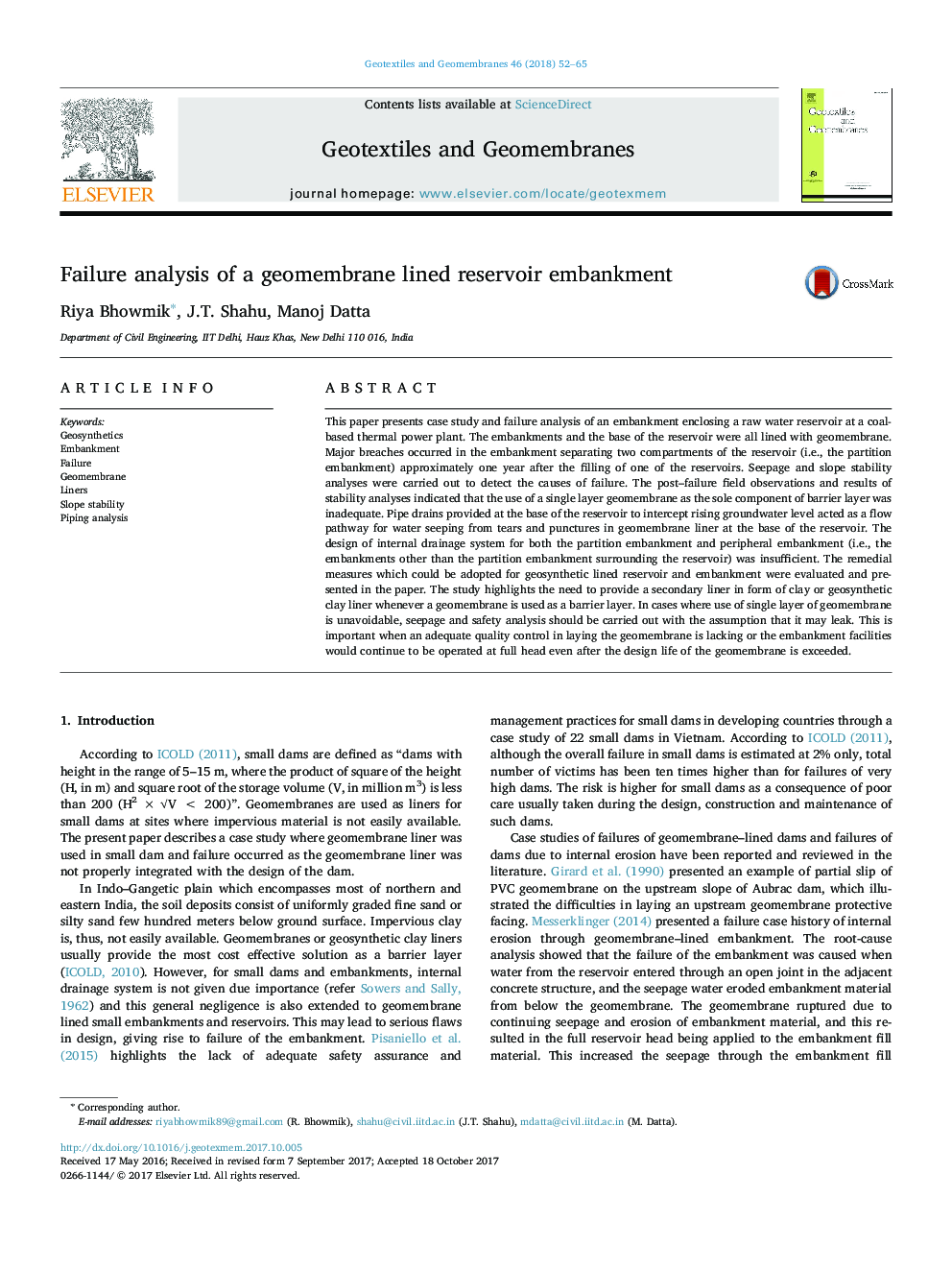| Article ID | Journal | Published Year | Pages | File Type |
|---|---|---|---|---|
| 6747016 | Geotextiles and Geomembranes | 2018 | 14 Pages |
Abstract
This paper presents case study and failure analysis of an embankment enclosing a raw water reservoir at a coal-based thermal power plant. The embankments and the base of the reservoir were all lined with geomembrane. Major breaches occurred in the embankment separating two compartments of the reservoir (i.e., the partition embankment) approximately one year after the filling of one of the reservoirs. Seepage and slope stability analyses were carried out to detect the causes of failure. The post-failure field observations and results of stability analyses indicated that the use of a single layer geomembrane as the sole component of barrier layer was inadequate. Pipe drains provided at the base of the reservoir to intercept rising groundwater level acted as a flow pathway for water seeping from tears and punctures in geomembrane liner at the base of the reservoir. The design of internal drainage system for both the partition embankment and peripheral embankment (i.e., the embankments other than the partition embankment surrounding the reservoir) was insufficient. The remedial measures which could be adopted for geosynthetic lined reservoir and embankment were evaluated and presented in the paper. The study highlights the need to provide a secondary liner in form of clay or geosynthetic clay liner whenever a geomembrane is used as a barrier layer. In cases where use of single layer of geomembrane is unavoidable, seepage and safety analysis should be carried out with the assumption that it may leak. This is important when an adequate quality control in laying the geomembrane is lacking or the embankment facilities would continue to be operated at full head even after the design life of the geomembrane is exceeded.
Related Topics
Physical Sciences and Engineering
Earth and Planetary Sciences
Geotechnical Engineering and Engineering Geology
Authors
Riya Bhowmik, J.T. Shahu, Manoj Datta,
